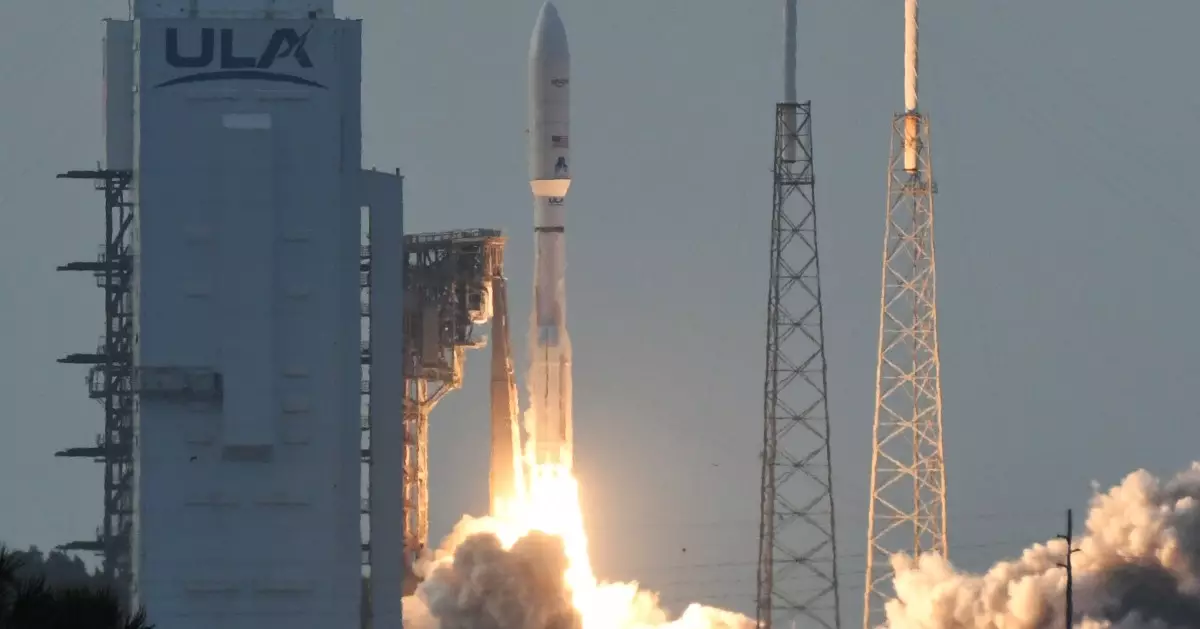In an audacious move to reshape global internet accessibility, Amazon’s Project Kuiper recently achieved a significant milestone with the deployment of its first 27 satellites into low-Earth orbit. This initial launch, taking place on April 28th, marks the start of an expansive journey to establish a broadband constellation that could rival industry pioneer Starlink. With over 3,000 additional satellites planned, Amazon is not merely entering the fray; it is gearing up to potentially revolutionize how we think about connectivity and the digital landscape.
As the launch took place amid a backdrop of frequent delays and weather-related setbacks, anticipation ran high. After a failed attempt on April 9th, the United Launch Alliance (ULA) Atlas V rocket finally lifted off from Cape Canaveral Space Force Station, signifying the beginning of an ambitious operation aimed at enhancing internet access worldwide. Each satellite was deployed at an altitude of approximately 280 miles (450 kilometers), where they will not only provide broadband services but also serve as a testament to the advancements in satellite technology.
A Game-Changer for Global Internet Access
Amazon’s Project Kuiper is not simply a business venture; it embodies a vision for a more interconnected world. As internet access remains a luxury for many, particularly in remote and underserved areas, the potential benefits of this satellite constellation are immense. The planned constellation aims to deliver “high-speed, low-latency” internet solutions to a global audience. This is crucial, as the digital divide continues to deepen in various corners of the globe, depriving millions of opportunities for education, commerce, and communication.
By targeting nearly 3,236 satellites, Project Kuiper aims to push the boundaries of satellite internet far beyond what currently exists. In direct competition with SpaceX’s already-established Starlink service, which has leapfrogged ahead with over 7,200 operational satellites, Amazon is under pressure to not only match but hopefully exceed what Starlink offers. According to reports, the Federal Communications Commission has mandated that by mid-2026, Amazon must have 1,618 satellites in orbit. Such timelines reflect the urgency and scale at which this initiative is progressing.
The Challenge Ahead: Navigating a Crowded Orbit
The challenge that Amazon faces is formidable. As SpaceX continues its rapid expansion, having recently completed its 50th Starlink mission in 2025, the competition is heating up. Starlink has regulatory approval to deploy a staggering 34,400 satellites, and the market’s appetite for satellite internet is only expected to grow. This raises significant questions about the sustainability and governance of low-Earth orbit, which is beginning to resemble a bustling highway in space.
Moreover, the complexity surrounding orbital space liability and satellite collision risks must be acknowledged. As more commercial entities step into the satellite arena—ranging from France’s Eutelsat to China’s Spacesail—the stakes rise not just for corporate leadership but also for international cooperation on regulatory frameworks. The need for robust strategies to manage orbital debris and ensure safe satellite operation is urgent. Amazon has the technological prowess and financial backing to address these issues, but its success will depend on proactivity and innovation in overcoming these hurdles.
An Ambitious Vision Supported by Unwavering Confidence
Amazon’s CEO, Andy Jassy, emphasized the hard work and ingenuity that went into making this launch a reality, illustrating a company culture driven by creativity and determination. He expressed pride in the collective efforts of the team behind Project Kuiper, stressing that this first step represents more than just a launch; it is a launchpad for future connections and transformative possibilities in connectivity.
This ambitious project, with a whopping investment of $10 billion, stands not only to challenge existing players like SpaceX but also to fundamentally alter the landscape of satellite internet. As the digital world contemplates the impact of such advancements, Amazon’s The Project Kuiper embarks on a journey potentially laden with pitfalls and triumphs alike. However, the fundamental question remains: can it truly redefine internet access for the millions still waiting for a reliable connection? The answer, driven by data and technological evolution, will unfold in the coming years.

